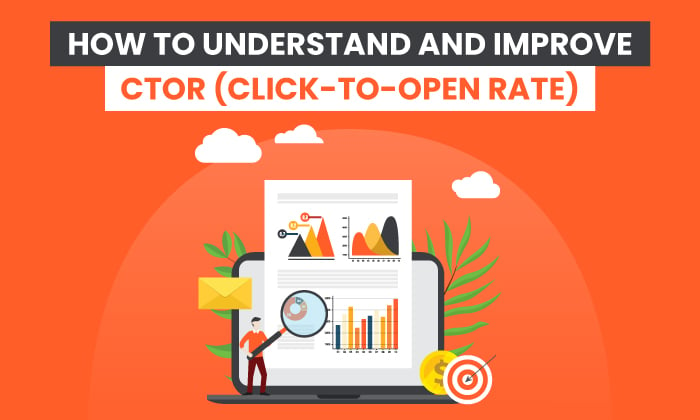
Email marketing is one of the most important strategic channels in a marketer’s toolkit. According to UK DMA, 91 percent of marketers rate email as their most important channel, followed by social media at 83 percent.
Email marketing’s success rate comes from its high ROI, which DMA states comes in at around $58 for every $1 spent.
All this aside, your email campaigns won’t mean anything if you don’t harness your click-to-open rate (CTOR). Tracking and optimizing this metric can help you understand how effective your email content is in engaging your customers. It can also help you build strategies to improve your content in the long run.
This post explains why your click-to-open rate matters, how to improve it, and how to create effective marketing emails that your customers want to read.
What Is Click-to-Open Rate and Why Is It Important?
A click-to-open rate is an equation that focuses on the number of unique clicks and unique opens your email receives. This can show you how effective your email is in terms of content and design and how it encourages action in your customers.
Click-to-open rates are important because they show you if a customer found the information inside your email relevant, valuable, and engaging.
For example, if you have a high CTOR, it can indicate your customers enjoy the copy, images, links, and layout within your email.
Basically, the longer someone stays within your email, browses your content, and clicks through, the higher your click-to-open rate will be.
Understanding the kinds of content that inspire action in your audience will help you improve your A/B testing and grow your email subscribers.
CTOR vs. CTR vs. Open Rate
Unlike your click-to-open rate, your email open rate shows you how many people opened your email campaign.
For example, if you sent your campaign to 2,000 people, you may see that 850 recipients opened your email. This would be a 42 percent open rate, which is a strong metric by email marketing standards.
On the other hand, click-through rates focus on the number of clicks and opens an email receives. This can show you how many people viewed your email but often misses the more direct actions you want to gauge, such as who clicked your call-to-action or navigated the links in your email.
While open rates and CTR’s are important in judging whether or not your subject lines and headlines generated interest in your audience, your CTOR can show you if the content of your email is achieving desired customer actions.
Ultimately, all of these metrics can be important when understanding the success of your email marketing campaigns, but it’s key you don’t overlook your click-to-open rates.
How to Calculate Your Click-to-Open Rate
To calculate your click-to-open rate, simply divide your unique clicks by your unique opens and multiply the answer by 100.
A unique click is the number of recipient email clicks divided by the number of emails sent in the campaign. A unique open rate is the number of unique email recipient opens divided by the number of emails sent in the campaign.
Here is the CTOR equation:
(unique clicks/unique opens) x 100
Generally, a good click-to-open rate is between 20-30 percent, depending on your industry and audience.
According to Campaign Monitor, agriculture, education, government, media, and real estate companies tend to have higher-than-average click-to-open rates.
In contrast, retail, food, and travel industries tend to have a lower-than-average CTOR.
The average across industries lands at 18 percent.

8 Ways to Improve CTOR
Harnessing your click-to-open rate can help you create more customer-centric content. It also gives you another metric to measure the success of your email marketing campaigns.
Here are a few simple ways to improve your click-to-open rate and engage your customers in your email campaigns.
1. Make the Content Easy to Scan
A recent study by the Technical University of Denmark found global attention spans are declining because of the amount of information available to us. With so much information to choose from, focusing on one brand, product, or piece of content becomes increasingly difficult.
For marketers, this statistic reminds us of the importance of making our content stand out. In email marketing, with more than 300 billion emails sent per day, competition for customer attention has never been higher.
To combat this and to improve your click-to-open rate, make your email content scannable.
Bring up key points immediately and use headlines to capture user attention quickly.
Break up your copy in short chunks and ensure your sections flow logically.
Here’s an example from Target, with their special offer shown right at the top, simple, clear copy showing items they want to promote, and sections that break up the content.
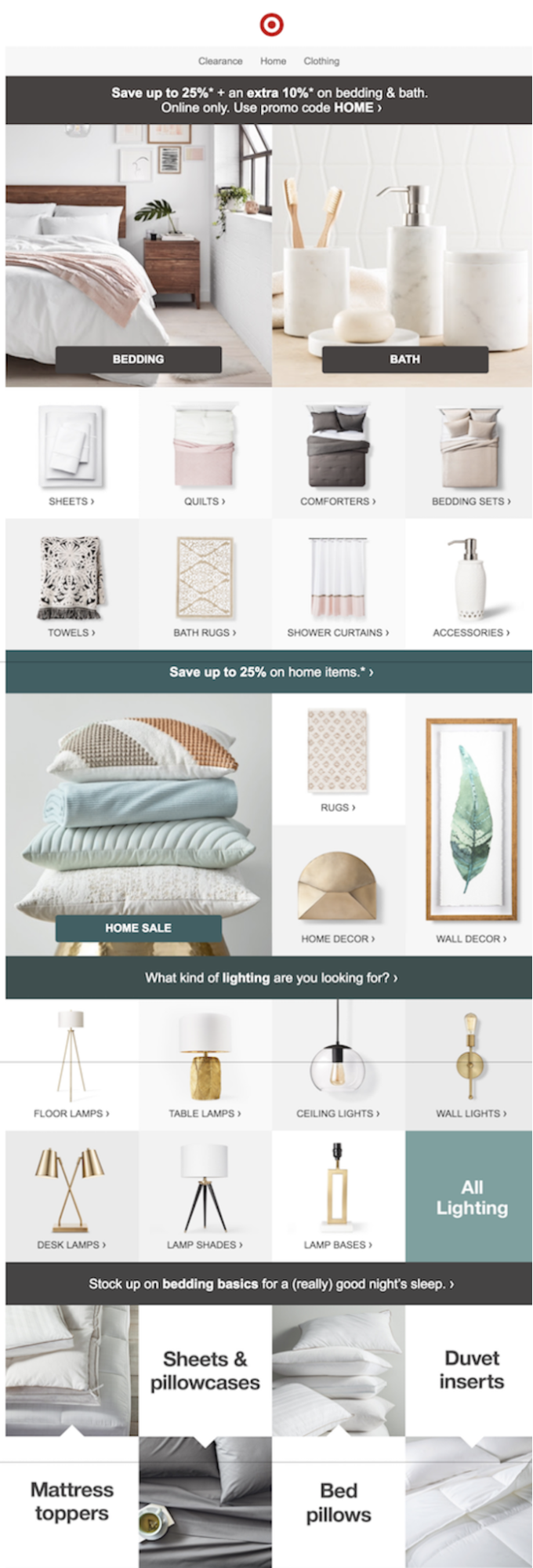
2. Include a CTA
A clear call-to-action is a great way to navigate your reader to an end goal.
When choosing where to include your CTA, consider exactly what you’re asking of your email openers.
Do you want them to:
- Make a purchase.
- Book an appointment.
- Call your store.
- Browse your content.
Whatever your goal, make your CTA clear, concise, and persuasive.
CTA’s can be included at the end of each section, where appropriate, or at the very end of the email after you’ve delivered your pitch.
Using buttons is a great way to make your CTA stand out, but clickable links can also work if that fits your design better.
Check out our 16 Hacks That’ll Get Your Call-to-Action Buttons Clicked to learn more ways to craft high-performing CTAs.
3. Use Clear and Engaging Copy
Good copy is essential when creating connections with customers.
Your email copy should be clear, engaging, and strike an emotional bond with your target audience, both in your headlines and in the body sections of your email.
Take the example below, from Boulder coffee company Jot.
The first headline offers readers the promise of improvement and change. While it doesn’t outline the product directly, it works when paired with a clear product photo above.
Jot follows up the headline with a clear description of who they are and what they are offering. They also add in questions which makes the copy more conversational.
A final CTA seals the deal.
The feeling after reading the email is clear: You want what they are selling.
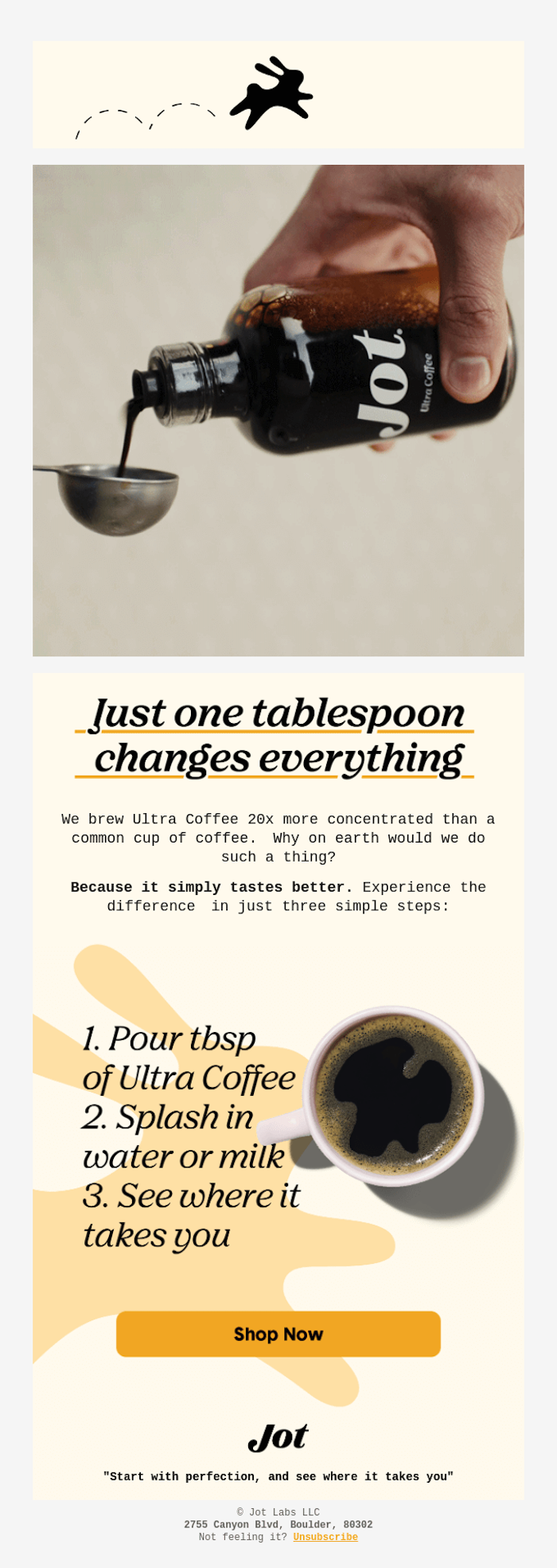
4. Use High Quality Images
All of your email marketing campaigns should be designed for conversions.
One simple way to do this is to use high-quality images throughout your email.
Images can evoke emotion in readers, whether that be envy at a sparkling beach resort, longing for a delicious burger, or laughing at a funny animal.
When using images in your email marketing campaigns, be sure to use images that are appropriately sized for your content to avoid distortion.
Make every image contextually relevant to the rest of the email body, too.
Take the below example from Outer outdoor furnishings, which shows a woman relaxing on a comfortable couch while her family enjoys an outdoor pool. This high-quality image takes up most of the layout, driving home the feeling of summer fun and relaxation.

Below, Outer makes its message clear with its copy: Live Better. Outside.
By using this image, Outer creates a scene for its audience and shows them the way they want to live.
5. Optimize the Subject Line
Email subject lines can go a long way in improving your click-to-open rate.
According to Invespcro, 47 percent of email recipients open emails based on the subject line. Also, 69 percent of this same pool sends emails to their spam folder based on the subject line.
The more people open your email, the more chances you have to engage them with the content within. It all starts in the inbox!
Good headlines should be descriptive and attention-grabbing while containing the most important info you want your customers to know.
Good subject lines should:
- generate curiosity
- communicate urgency
- highlight offers
- validate social proof
- be personalized
The biggest thing to remember is to give people a reason to open your email.
Below is an example of a UFC marketing email that offers free fight streaming to subscribers.
The addition of an emoji catches your eye and the offer gives you a reason to read more. From there, users can navigate through UFC’s images, links, CTAs, and more to improve the companies click-to-open rate.
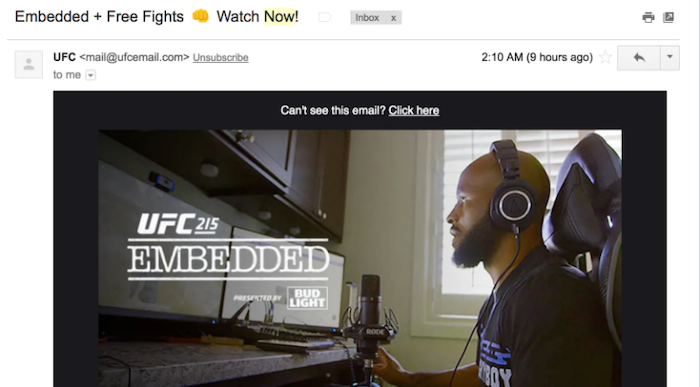
6. Design the Best Link Layout
The way you use links inside your email can affect the user experience and ultimately your click-to-open rate.
Whether internal links or external links, all links should be in logical places that flow with the body copy of your email.
Basically, make it easy to click!
Links should be:
- highlighted in a new, bold color
- clear and concise
- point to direct actions
- be logically placed
Take this example by my mind, which delivers its product info, thought leadership content, and customer-centric content like FAQ, all through clear, clickable links (though, unfortunately, there are some character text issues).
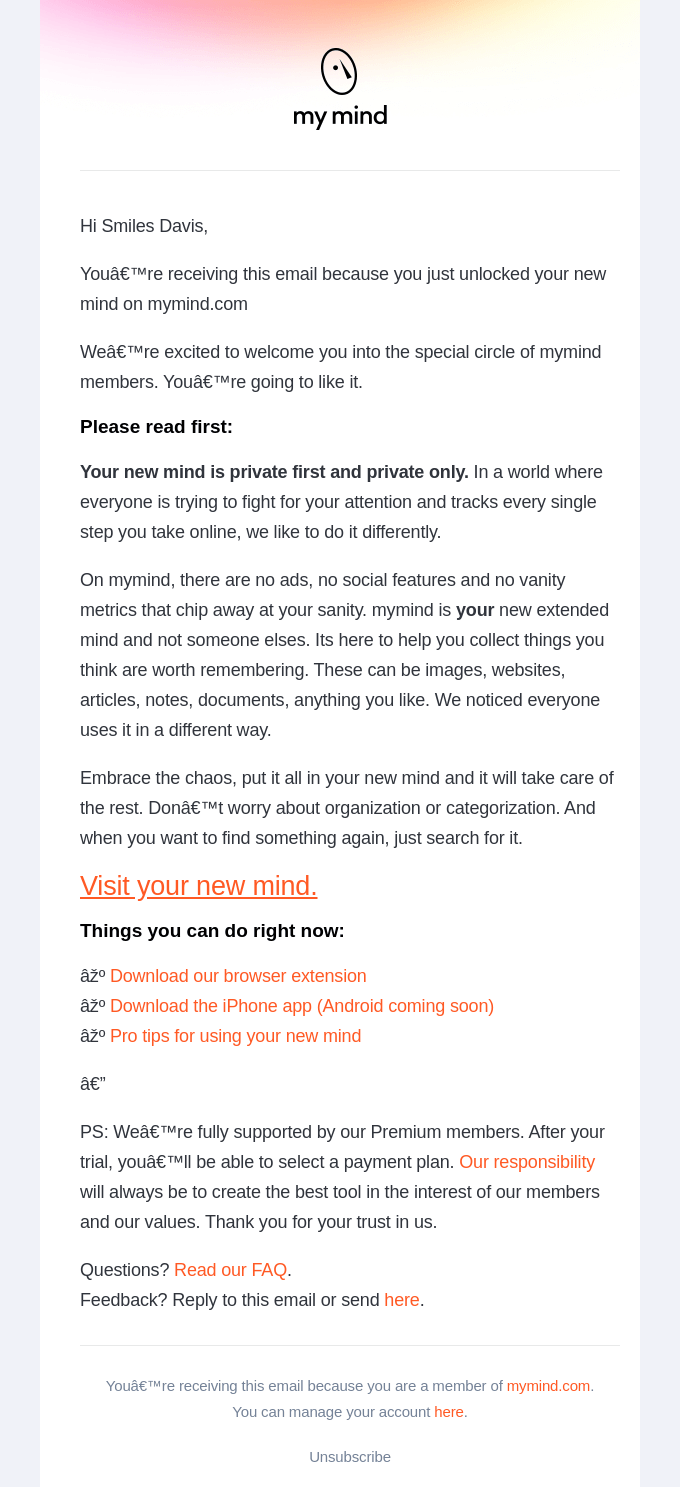
7. Personalize Your Emails
Personalization is key in content marketing, especially when it comes to email marketing.
There are many ways to personalize your email campaigns, from adding a recipient’s name in the subject line to segmenting your audiences into new, old, and returning customers.
According to Campaign Monitor, emails with personalized subject lines have a 26 percent better opening rate.
Similarly, marketers who used segmented campaigns to increase personalization saw a 760 percent increase in email revenue.
Another great tactic from the e-commerce market is to auto-populate products directly into your email layout that your customer is most likely to buy. This can be done by using tools such as Klayvio, or other AI-driven email marketing tools.
When personalizing your email content, leverage any data you have, such as products viewed, favorited, pages viewed, and more to deliver content specific to their tastes.
Personalization can also improve your click-to-open rate by creating brand trust and integrity with your audience. The more your customers trust you, the more likely they are to spend time browsing your content.
8. Analyze the Results
Analytics are essential to creating email marketing campaigns that drive results.
You’ll never be able to improve your campaigns if you don’t understand what worked and what didn’t.
If you’re noticing your click-to-open rate going down, don’t be afraid to switch up your content, or split test your campaigns, even if your existing content worked well for you before.
If you see high open rates but a low click-to-open rate, it may be a sign your subject line works but the content within your email could be improved.
A good marketer is always looking to improve, so pay close attention to your email marketing analytics and test new content, structures, and CTAs to see what performs best.
Conclusion
Improving your click-to-open rate is a great way to improve customer relationships, build brand integrity, and increase interactivity in your email marketing campaigns.
Remember, your click-to-open rate helps you understand how engaging the content within your emails is to your customers. Calculating your CTOR is an effective way of optimizing your content and creating better email flows overall.
Other metrics, such as your open rates and click-through rates, should also be tracked to ensure your email campaigns bring your business the best results.
What other ways can you think of to improve your click-to-open rate?
About us and this blog
We are a digital marketing company with a focus on helping our customers achieve great results across several key areas.
Request a free quote
We offer professional SEO services that help websites increase their organic search score drastically in order to compete for the highest rankings even when it comes to highly competitive keywords.
Subscribe to our newsletter!
More from our blog
See all postsRecent Posts
- Web Hosting September 26, 2023
- Affiliate Management September 26, 2023
- Online Presence Analysis September 26, 2023

